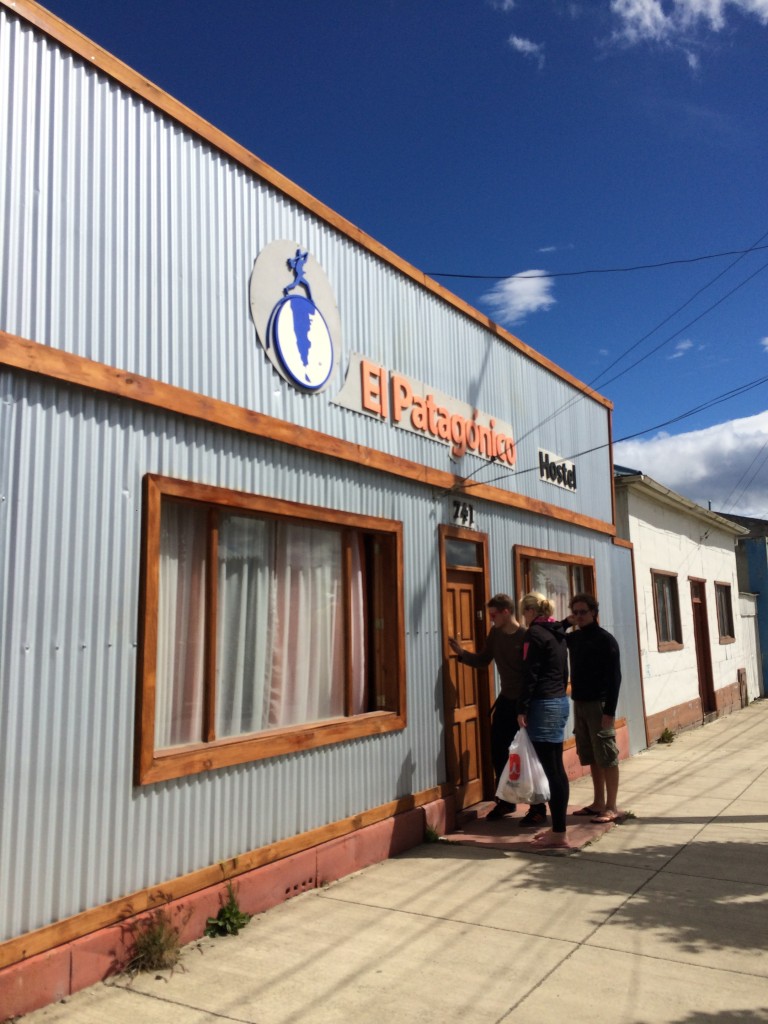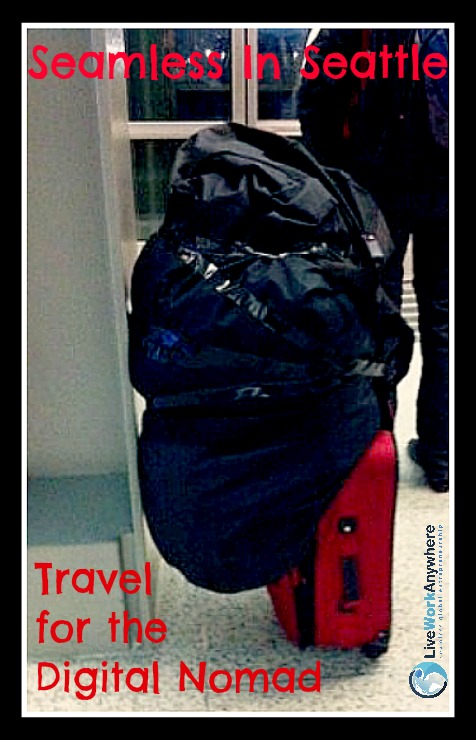There are a few things I do each time before I leave on a trip to make sure that I have no hiccups and can continue to keep my schedule, life, and work – in continuous flow. Here is my travel checklist and some tips I’d like to share.
1. Check Schedule & Calendar
Staying productive from anywhere is the true goal of a remote worker, freelancer, or digital nomad. Your clients, schedule, and calendar matter.
Plan For Existing Meetings
First, take a look at your calendar to see what meetings you have coming up. Make sure that you plan your flight and all your time in transit around that meeting or call. Leave yourself enough of a buffer between flights, metro stations, taxis, ubers, etc so that you can get there in time to have your call and actually have the head space to make sure it’s effective.
Everyone is different but you never know if the taxi will be late or overcharge you and your head is in haggle mode when it should be in sales mode. Be mentally prepared and give yourself the time to focus on the call in a quiet space with good wi-fi.
Set Your Upcoming Schedule
 Next, decide if you need to schedule any other meetings that week.
Next, decide if you need to schedule any other meetings that week.
Make sure your flight and travel plans are scheduled around your meetings and that you will have strong wi-fi and quiet, low-noise for meetings.
Figure out how you will work around the upcoming meetings. If you’ve committed to being there, it’s important to show up, and you need to plan accordingly – or rearrange early.
Confirmation Meetings
Even more importantly for travel, confirm your clients or business partners will be there (it’s a pain to reschedule, especially on the road, beside the obvious fact that people need to honor and respect each others’ schedules).
I don’t always tell my clients that I’m traveling. Not because I’m hiding anything but to keep them from panicking.
This is a double edged sword. If I say I’m leaving, they tend to panic. It’s that knee-jerk reaction that we are still programmed to believe that traveling means shutting off. This is changing. Soon, clients will just say “okay, safe travels, talk to you at our next meeting.” Some clients already just know and say something like “… wherever you are in the world.”
Set Expectations & Be Accountable
The truth is – just show up. Be accountable to yourself and to others. In general, meetings are canceled or rescheduled all the time. If you’re not traveling, yet you are in the same city and had to reschedule, it’s viewed as normal. But, if you tell people that you’re traveling then people tend to think your’e on vacation and you rescheduled for that reason, which portrays irresponsibility and can backfire on you.
Traveling while working personally makes me even more accountable. I don’t like to waste my own time especially when on the road.
Practicing integrity and being a person of your word, and consistency, is what is important. Not the place. Meeting goals, deadlines, and being accountable are what matter most.
2. Bring Food & Water
You never know when you’ll have an extended layover, the drinking fountain breaks down, or the stores close early. Make sure you have enough supplies for a just-in-case situation. Plus, it’s nice to have snacks and not be parched.
First thing I do (after security if in an airport) when traveling is to fill my water bot  tle. Even though you have to empty it before security if you’re getting on the plane, you never know when you’ll be stuck without something to drink. So find a water station and fill up.
tle. Even though you have to empty it before security if you’re getting on the plane, you never know when you’ll be stuck without something to drink. So find a water station and fill up.
Ideally bring a water bottle that has a filter, like a Brita filter, so that you can safely drink most tap water, depending on where you go.
Buy snack food. Packing nuts, dried fruits and granola bars ensures you’ll never be stuck starving. They take a long time to go bad, plus you can avoid the $20 dollar sandwich at the airport.
3. Banking & Financial
Set Travel Alert
Important – set your travel alert with your bank. Have you ever tried using your card only to find out it’s not working? It always happens at the worst time – when you’re about to pay for your next meal (that you’ve already eaten!), about to buy that sweater you’ve had your eye on, or need money to pay for a taxi. Figuring out how to call or contact your bank when you’re out and about overseas can be an especially fun challenge.
Setting an alert ahead of time will avoid all of this!
Reciprocity
Additionally, look online at which bank(s) offers reciprocity so you can save on ATM fees.
For example, I bank (partly) with Bank of America. You can google “set travel alert with <add your bank name here>” to find out if you are able to save on fees with your bank.
There are some credit cards, like the Delta Sky Miles card from American Express that allows you to save on international fees completely. For ATM cards, check with your bank. To the right is an example from Bank of America.
https://www.bankofamerica.com/deposits/manage/how-to-pay-when-traveling-abroad.go
4. Keep Local Currency Pocket Change
Bring enough cash to cover at least the way to the airport / train station and enough for the return trip when you land. I usually bring $20 USD or Euros each way for the airport and the subway or bus trip. If there’s some left over, I get to buy local snacks. 
Another $20 USD in my bag for when I land. Enough for breakfast and a bus ticket.
If I have local currency ahead of time, I usually carry about the equivalent of $20 for when I land.
If you don’t have local currency, all you have to do is pull cash out of the ATM at the airport wherever you land. The rate of exchange may be a little high (unless it’s on the reciprocal bank list) but it’s generally cheaper than going to the currency exchange bureau. When I land, I suggest taking out around $100-$200 USD or the local equivalent. This is enough to get you started with transportation, food / coffee, and a little extra for the unexpected.
Try to pay with a card (now that your travel alert is set) and save the cash for incidentals and until you arrive at your destination and until you know the next ATM spot where you’ll do your next cash withdrawal.
5. Necessities Checklist
This can vary but for me the necessities are:
 passport
passport- ticket booked with confirmation (and make sure I check in online beforehand to avoid long lines)
- credit cards (1 main, 1 for backup)
- laptop and power cord
- international power adaptor that covers the country(ies) I’ll be going to
- money ($20 usd each way)
- map (or picture of map) of transportation, i.e. subway maps for New York City
- smartphone
- contact information while abroad dispersed to family, friends, and clients
- bathroom kit i.e. toothbrush (though I can buy this when I land if I forget it)
I always have my necessities with me. I can leave from anywhere and go anywhere at pretty much any time with just a backpack. What I don’t have I pick up when I arrive, like toiletries. It’s always fun to buy shampoo in which I recognize the brand but cannot understand the label.
6. Accommodations Check
I am pretty adventurous but I like to know where I’ll sleep when I land, especially if I am jet lagged from a long i  nternational flight. Usually arranging the first day or first week in a place will give you time to get oriented – and you can go from there!
nternational flight. Usually arranging the first day or first week in a place will give you time to get oriented – and you can go from there!
One day versus one week is very different. I tend to book only one day if my destination is not so far away and there’s not a huge time or cultural change. I will book up to one week if it’s farther away, there’s a big time change, and if there is a language or huge cultural change.
I landed in South Africa today, for example, and I’ve booked an AirBnB apartment for 8 days to not only see the city but to get myself situated and talk to locals about where to go next.
So, fellow traveler, what’s on your pre-travel checklist? Do you have an item on your necessities list that you don’t see listed? What’s your priority when landing in a new place?










